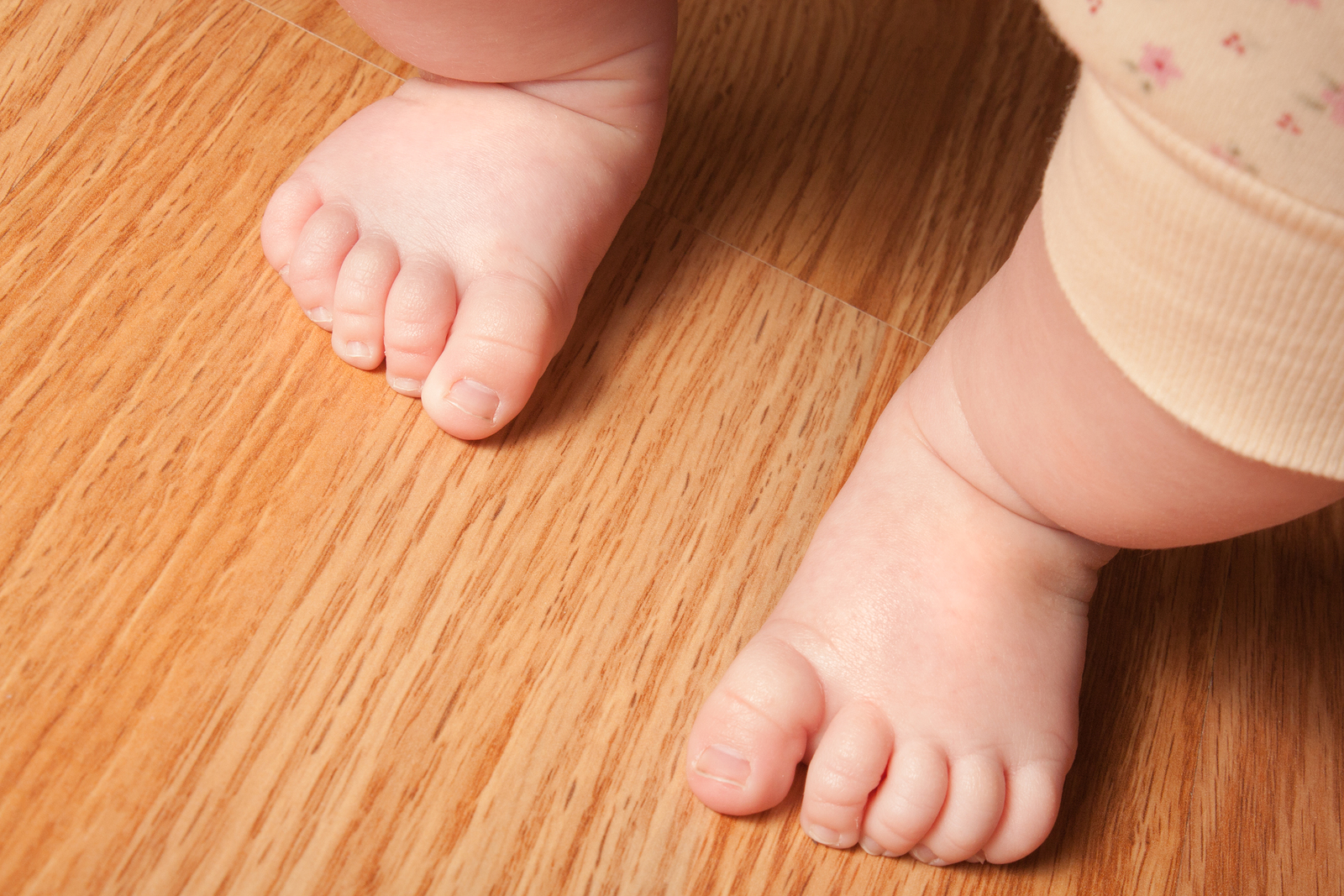Positive Support Reflex & Stepping Reflex: Enabling babies to stand and step
Children’s gross motor skills develop over time, but sometimes infants appear to be born with amazing skills like standing and even stepping. Standing and stepping in very young infants can actually be the result of neurological reflexes that are typical for all infants. The two reflexes that enable children to stand and step at birth are the positive support reflex and the stepping reflex.
Infants are born with a positive support reflex which enables the muscles of their legs to contract in a straight standing position when the balls of their feet make contact with a solid surface. Most children also exhibit a stepping reflex at birth which enables them to move their legs in a walking pattern when they are supported in a standing position and tilted slightly forward. Typically these reflexes eventually disappear or get integrated into a child’s voluntary motor skills. The stepping reflex usually goes away after about age 2 months and the positive supporting reflex usually gets integrated by around age 6 months.
When should your baby begin standing and walking?
Standing is a skill that usually emerges around six months of age when children begin to stand with support from family members or while holding on to furniture. Then between 9 and 12 months children should begin to stand alone without support. Non-reflexive stepping motions usually begin to emerge closer to 8 months of age. This leads to walking with support using push toys or with hands held and then independent walking between 12 and 15 months.
Can practicing these reflexes help my baby stand or walk earlier?
Some research is being done to investigate this concept. However, most therapists do not believe that “practicing” these reflexes will help children learn to stand or walk more quickly. Current belief is that you should encourage skills that are typical for your child’s age and stage of development. Find out what is typical for gross motor development and ideas to encourage theses skills in our gross motor section: by reading “Learning to Walk: What’s Typical, What’s Not”.

